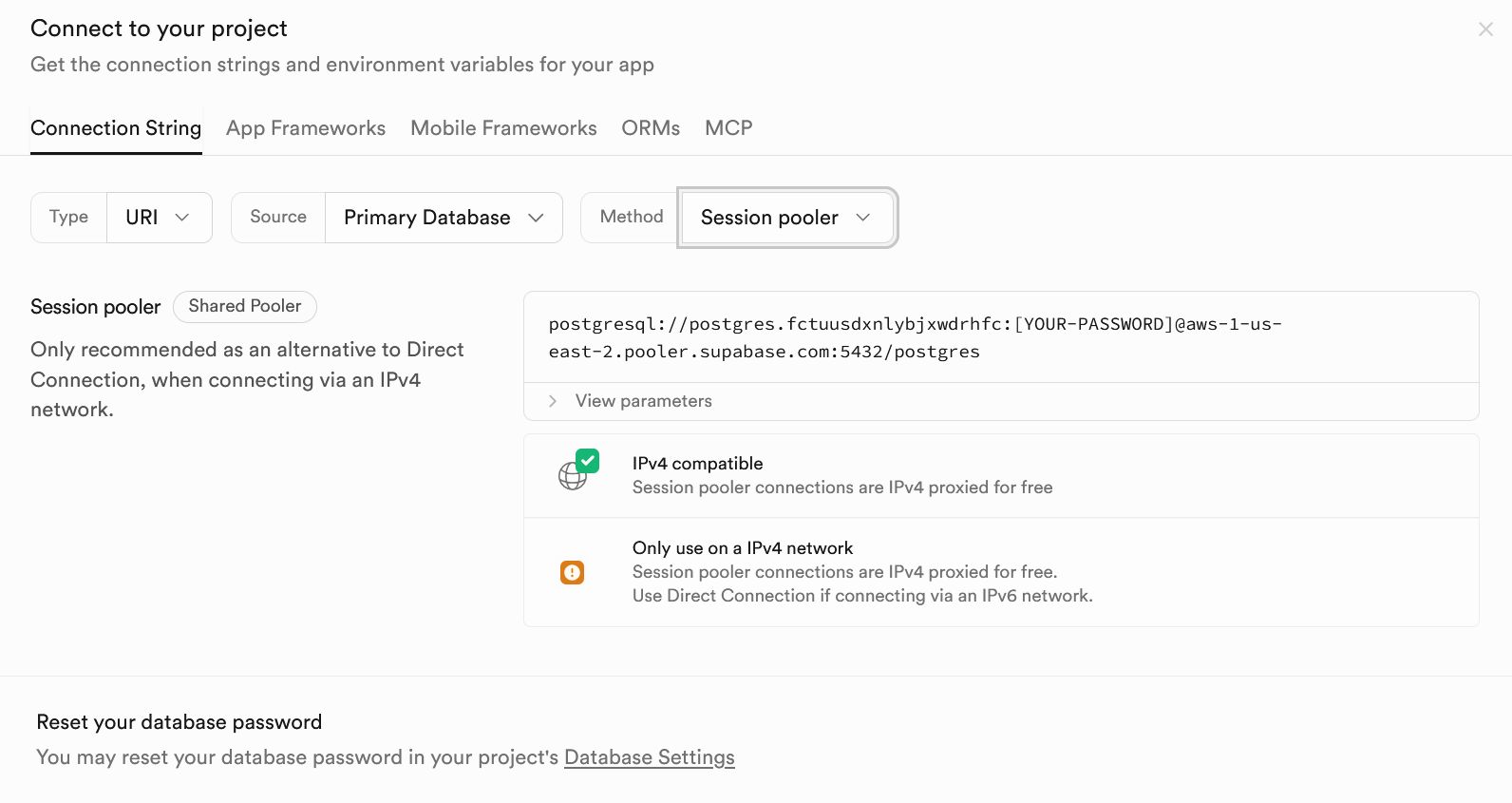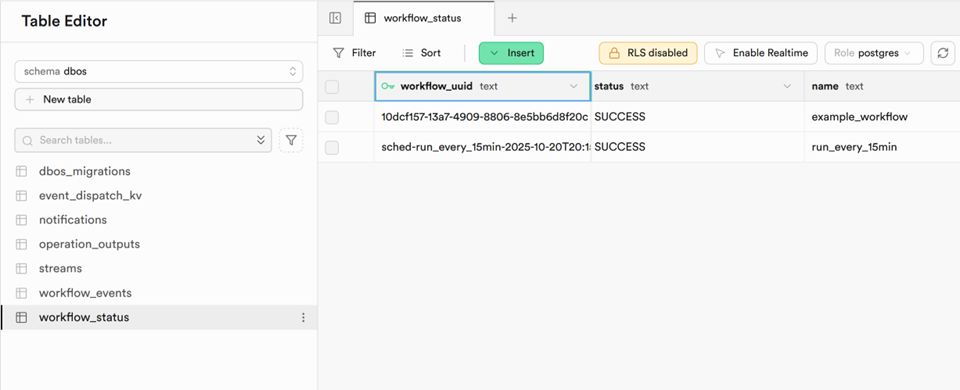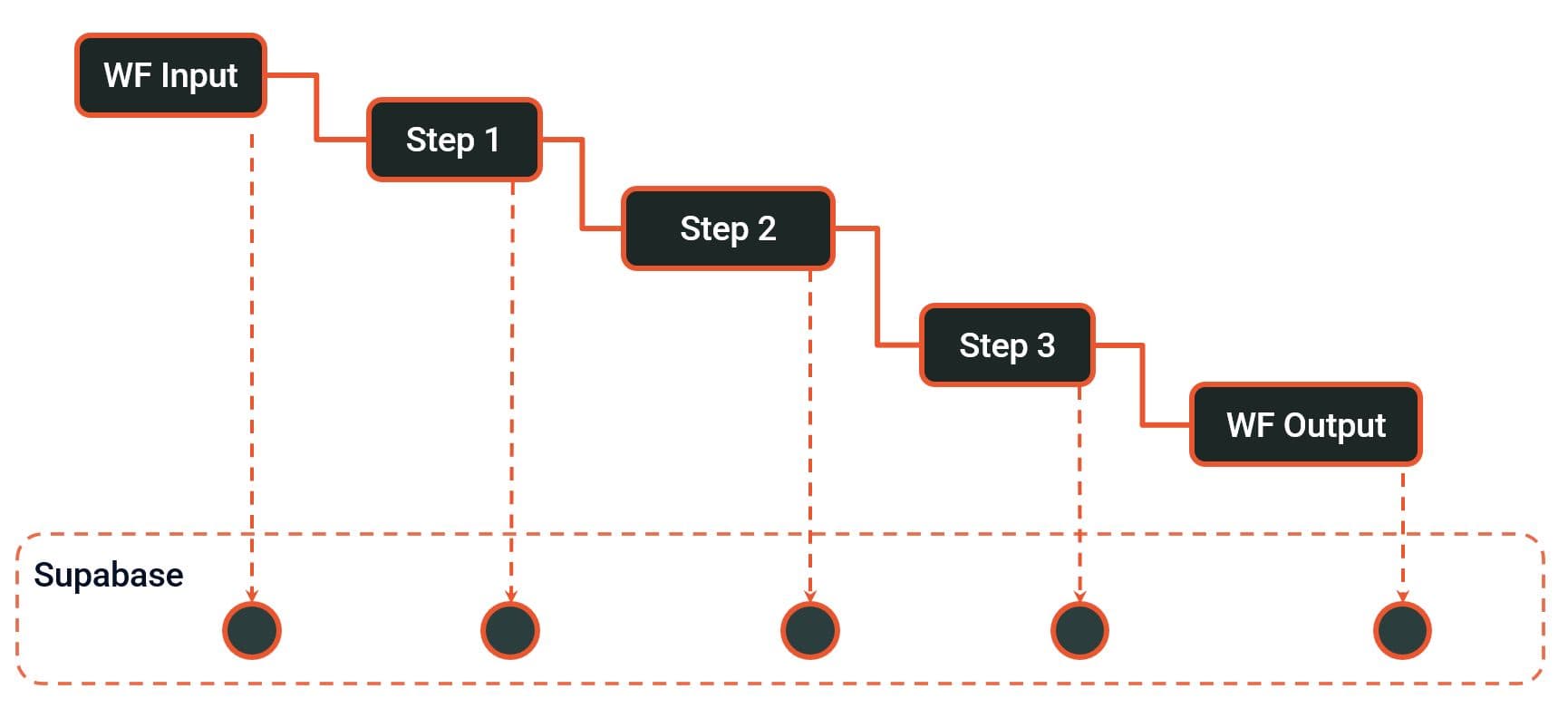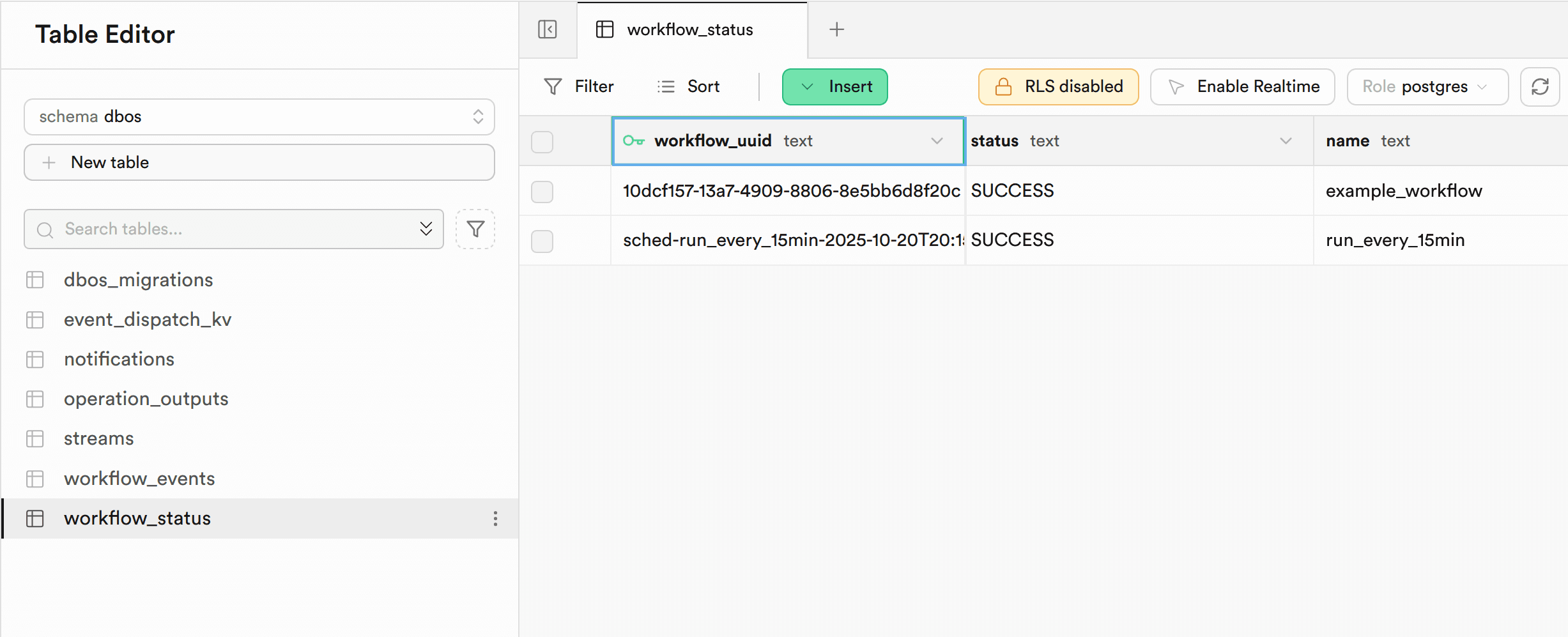
DBOS
Overview
DBOS provides lightweight durable workflows built on top of Postgres, helping you build highly reliable AI agents, data pipelines, and business applications. Instead of managing your own workflow orchestrator or task queue system, you can use DBOS to add durable workflows and queues to your program in just a few lines of code, entirely backed by your Supabase database. Here’s how to get started:
1. Set up a Local Application
If you haven't already, follow the DBOS quickstart to set up a DBOS application locally. The rest of this guide will assume you have a local application.
2. Connect to Your Supabase Database
Next, open your Supabase dashboard at supabase.com/dashboard, select a project, and click "Connect" to retrieve connection information for your Supabase database.
You should see a screen that looks like this, showing the connection string for your database:

Make sure your connection method is set to "Direct connection" (if your database supports it) or to "Session pooler".
When you are ready, copy the connection string (filling in your Supabase password) from the dashboard and set the DBOS_SYSTEM_DATABASE_URL environment variable to it:
_10export DBOS_SYSTEM_DATABASE_URL="<your connection string>"
3. Launch Your Application
Now, launch your DBOS application. It should successfully connect to your Supabase database, printing your masked Supabase database URL on startup.
After connecting your DBOS application to Supabase, you can use the Supabase console to view your DBOS system tables. Open the "Table Editor" tab in the Supabase console. For your schema, select "dbos". You can now see DBOS durably checkpoint your workflows to your Supabase database:

Details
Third-party integrations and docs are managed by Supabase partners.

